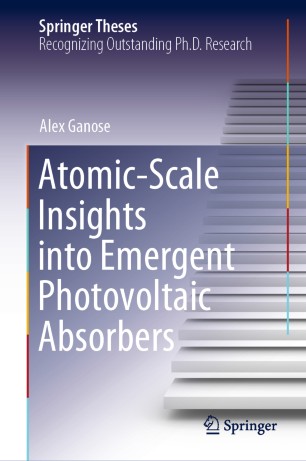

Most ebook files are in PDF format, so you can easily read them using various software such as Foxit Reader or directly on the Google Chrome browser.
Some ebook files are released by publishers in other formats such as .awz, .mobi, .epub, .fb2, etc. You may need to install specific software to read these formats on mobile/PC, such as Calibre.
Please read the tutorial at this link: https://ebookbell.com/faq
We offer FREE conversion to the popular formats you request; however, this may take some time. Therefore, right after payment, please email us, and we will try to provide the service as quickly as possible.
For some exceptional file formats or broken links (if any), please refrain from opening any disputes. Instead, email us first, and we will try to assist within a maximum of 6 hours.
EbookBell Team

5.0
58 reviewsThis book presents an original investigation into alternative photovoltaic absorbers. Solar power is a highly promising renewable energy solution; however, its success is hampered by the limited cost-effectiveness of current devices. The book assesses the photovoltaic performance of over 20 materials using state-of-the-art, first-principles methods. Adopting a computational approach, it investigates atomic-scale properties at a level of accuracy that is difficult to achieve using laboratory-based experimental techniques. Unlike many theoretical studies, it provides specific advice to those involved in experimental investigations. Further, it proposes directions for future research.
This book advances the field of photovoltaics in three crucial ways: firstly, it identifies why one class of proposed materials cannot achieve high efficiency, while at the same time gaining insights that can be used to design future absorbers. Secondly, it shows that poor performance in the bismuth chalcohalides is not due to fundamental limitations, and can be overcome by finely controlling synthesis conditions. Lastly, it describes a range of new stable materials that are expected to show excellent photovoltaic performance.